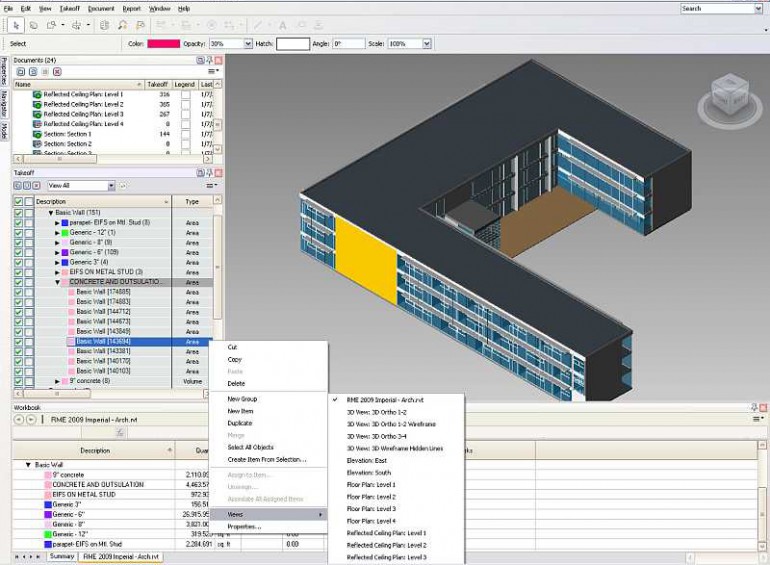
Directing the Takeoff in Construction Estimating
The MTO helps to estimate value of materials, time and labor costs in a way to manage the construction project but the basic techniques are changed a little.
Construction projects are matter of time, money and right management skills and an estimator should be aware of every little detail of a project. An estimator is like the leader of a project, under whom the project will take a transformation so he should be very firm and professional. Before starting any project, an estimator should be aware about the types and quantities of different materials to complete and it will give an assurance of the right evaluation of the costs, materials and labor costs.
This process is called takeoff or material takeoff which is an important part of the estimating process and a more thorough process is needed for superior construction projects. It is important to plan the task in a methodical way for achieving the most detailed possible estimation and it will help to run the job smoother on the ground to ensure the workers or contractors will get their needs. Besides improving the estimate by a complete takeoff there are many more things to know. That?s why takeoff must quantify all the materials that are needed to complete the project like every physical material that fits into the project but not the tools. The MTO quantify the counting materials like bricks, lengths of electrical cable, plumbing pipes and light fixtures with the type of required material like grade of steel or electrical cable.
Type of measurements
Different contractors have a different range of requirements in the case of compiling their takeoff but all of them follow the basics of takeoff. There are mainly four types of measurement which are needed for the takeoff in most construction projects
- Count
- Length
- Area
- Volume
The estimator will count the numbers as per specific individual items these could be anything like the number of light fixtures for a specific building to the number of nails need to finish the project.
Many items are measured as per length and it is important for an estimator to know other dimensions like diameter with the type of material that will help to know extra amounts for elements like drops for switches, boxes and panels while measuring the electrical cable.
Some materials need a measurement of the surface area that has elements like flooring, cladding or an estimate of the amount of paint required for a given structure.
Volume sizes are needed for same materials like the amount of asphalt as per yard or the concrete is needed to set a foundation.
Type of takeoffs
Mainly two types of takeoffs are found for construction projects and they are- Manual and Digital takeoffs, here are some details of them.
- Manual Takeoffs
- Digital Takeoffs
There are still many construction design professionals who find comfort in designing with traditional blueprints and plans so an estimator must have the knowledge to read the blueprints properly as per the work type. There are different blueprints and plans like general building plans, residential/official/corporate building plans, electrical and plumbing diagrams etc. They are the representator of diagrammatic diagrams and contain different symbols and notes which show the types of required materials. But it should be kept in mind that these blueprints are little costly and time-consuming to create so an estimator should use a clear plastic overlay rather than working with it directly. Though now-a-days the estimators are using new technology to do their estimates which take less time and can be done easily. The quantities and materials can be sending to spreadsheets or can be used different preprinted forms and worksheets to help the estimators doing the right material costs for every component.
As it is said that manual takeoffs are hard to handle and made many companies are producing digital blueprints that can be used to streamline and will program the takeoff method. It comes in software packages that have various specifications but they all allow an estimator to understand blueprints and to enter the right quantities and measurements in a digital format.
An MEP estimator has to take care about every little detail that may vary upon some factors like the type of drawing is used, the specific materials, any kind of software; its type and scale of the job etc. Though the basic techniques are same, but there is no harm to break down them for the electrical components of a project those are described below.
- Accounting the symbols
- Calculating the circuits
- Calculating the takeoff
Accounting the symbols will help to guess required number of components for making the job done whether the blueprints and drawings can be used to show various elements like fixtures, switches and beneficial receptacles. When an estimator fully understands the symbols and the denoted components then other no-standard components can be identified by a key or with the drawings. Counting of every component type individually can be held with a tally counter that can keep the accuracy intact and a track of them.
It is also important to count the shown circuits in the drawings and can be done by scaling every page carefully. A copy of the blueprint will keep aside for work and there are many tools for taking measurement form drawings and rules and measuring wheels are fine for fast measurement.
A takeoff figure can also count and measurements with using trade market values where a right estimate of cost in involved.

Source constructible.trimble.com

